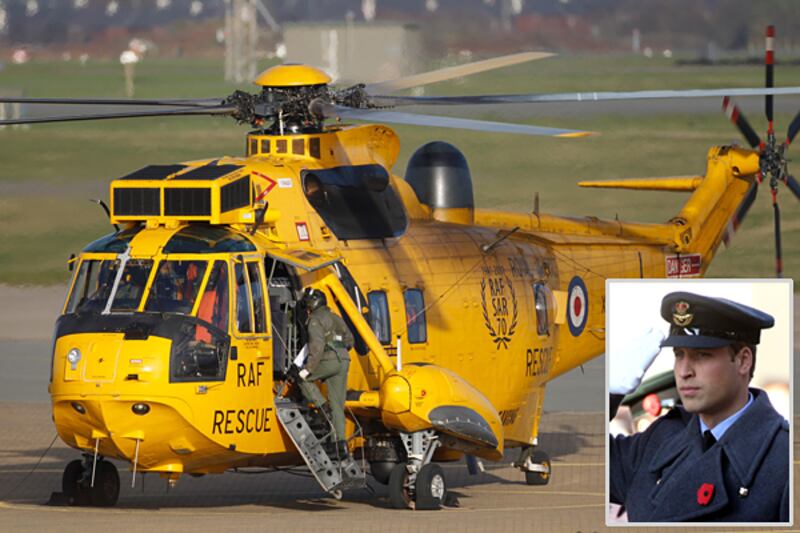The top of the television news for a full cycle in the U.K. this weekend was, unusually, a story about the helicopter rescue of two sailors washed overboard when their ship sank in the Irish Sea.

Despite the undeniable newsworthiness of this tragic event (of the other six Russian crewmen, one is confirmed and five are presumed dead) and the fact that dramatic night-vision footage of a man suspended from a chopper by a rope grabbing two mariners from an inflatable raft was provided to news organizations, a casual observer might have been rather surprised at the attention paid to this particular shipwreck.
Commercial-shipping accidents happen in British waters all the time, and they don’t usually make much more than a ripple on the media lake, especially when it is a foreign crew that is lost, but this one seems a shoo-in for Monday’s front pages.
This rescue was different, because this was a rescue by royal appointment. For, at the controls of the helicopter, coolly piloting his craft above the foaming waters, was none other than Flight Lt. William Wales, better known as the Duke of Cambridge, even better known as Prince William. Only The Irish Times has been able to resist mentioning the involvement of the British royal family.
That William is the greatest thing to come out of the U.K. since afternoon tea can surely be denied no longer. After a royal wedding that rendered him a prince of romance, he is now emerging as the U.K.’s No. 1 action man, equally adept at saving lost hill-walkers, putting FIFA in its place, or reminding the Argentines who owns the Falkland Islands. Doubtless, tomorrow he will be spotted helping old ladies to cross the road.
The latest adventure in the life of the world’s most hunky prince began when a 266-foot ship, the Swanland, was struck by an enormous wave during gale-force wind conditions off the coast of Wales. The ship, which was carrying a consignment of limestone, broke in half. It issued a mayday call at around 2 a.m. as it was going down.
Sea King helicopters from RAF Valley (William’s base in Holyhead, Wales) and the Irish Coast Guard were scrambled, but it was the chopper of which William was copilot that located the forlorn raft at 3:40 a.m., with the two surviving sailors desperately clinging to it. As William and his team hovered in place, buffeted by the wind, the footage shows, a winchman descended to the raft and grabbed the fortunate survivors one at a time.
A Ministry of Defence spokesman said, “It was a four-man crew—captain, copilot, radar operator, and winchman—and he was the copilot. The weather conditions were described as extremely bad, with poor visibility and strong winds.”
Prince William spent 19 months training as a search-and-rescue pilot, qualifying in September of last year. He has been flying operational missions since then, and in another two years he will ascend to the rank of captain. He is to be posted to the Falkland Islands next year as part of his training, a move that has angered Argentine politicians, who claim the decision to station a member of the royal family on the islands, which Argentina still claims and over which the U.K. and Argentina fought a brief but bitter conflict 30 years ago, is “provocative.”
While his younger brother, who also flies helicopters, may not be doing much for the wholesome family image, apparently more interested in bar hopping, cocktail waitresses, and hanging out with the Beckhams than anything else, William appears to have singlehandedly rehabilitated the beleaguered British monarchy since his April wedding to Kate Middleton.
Sending the eldest son into the search-and-rescue business may not have been a calculated PR move by the palace, but it has certainly played out extremely well for William in the media. It always used to be the unassailable fall-back position of all anti-monarchists (and quite a few pro-monarchists, too) that the royal family were nothing more than a pampered, effete bunch who had never done a useful day’s work in their lives.
But with the second in line to the throne out at sea saving lives, that notion’s getting harder and harder to hold.





